We took the subway to meet Yayoi at 9:45, but there were four exits, not visible from each other. Hmm. I tried a nearby telephone, using my handy ability to recognize the kanji for yen (円) and the knowledge that even if it went badly, horribly wrong, not much was at stake. Well, it did go wrong, but not badly. I had a string of numbers, but didn't know that the first two were only for use outside of Japan. I should have entered a 0 instead of an 81. Just as I finished my third permutation of when to insert coins, when to dial, and when to panic, Camilla showed up with Yayoi, and we set off down the road together, with our luggage rolling heavily behind us.
Where were we going? To the Tsukiji fish market. It was a noisy street and walking three abreast wasn't possible, so I simply accepted this explanation instead of quizzing Yayoi on why we were doing this at 10 in the morning instead of 4 when it opens, or even why we were doing it at all. We strode along with the insouciant confidence of tourists, and then met a crowd of people who were going with us. Why? I do not know. One of them, I learned much later in the day, was a manga illustrator for Clamp. I would have been very excited except that I didn't find out which one, and it seems a bit extreme to be thrilled about meeting somebody you can't exactly remember. Anyway, we all trotted along to the fish market.
But first, an early lunch. One of our group distributed the rest of us, three or four at a time, amongst the teeny sashimi booths outside of the actual market. We sat in a phone-booth sized restaurant and had amazing sashimi, the texture of ripe Brie, the flavor of persimmon. Also tea, rice, and miso soup, of course. Then we regrouped and went across a road to the fish market.
There it was, the largest fish market in the world, closing up for the day. We edged between careening handcarts, scooters, and forklifts, and watched men at countless booths wash down their area. Some of the slower ones still displayed an astonishing array of crabs, shrimp, shellfish, and fish. We didn't see the whale section. The enormous slab of red meat Camilla thought was whale was tuna. Finally, it was clear that we were seriously in the way of people who just wanted to go home and were actually willing to skirt along the edge of being rude about it. We scurried away and waited for the others in a parking lot. They eventually appeared, with handbags and brief cases full of reject fish, sold to individual customers at a discount after the chefs are done with their shopping earlier in the day. Everyone looked smug.
On the way to the next destination we stopped at a Buddhist Temple. In the States, on the West Coast at least, most people think of Buddhism as an exacting, extremely holy sort of religion, mysterious and blessed by Alan Watts and Gary Snyder. Well, here, it is just another damn religion. The temple was huge, new, and ever so slightly cheesy. There was a small crowd of drop-in worshippers, and room for about 200 in the main room. It seemed a bit like a Protestant church as far as furnishings and emotional feel, except that it was being used even though it was an off-day.
After that we walked through narrow alleys to a block that was the only one in that part of Tokyo that hadn't burned in World War II. There was the stamp studio. Stamp?
Japan is a stamp culture rather than a signature culture. If you want to do something major at a bank or other scary institution, you use a stamp to make it formal. This guy carves them from stone. We sat down to tea and friendly conversation about the Chinese origin of kanji. Eventually he said that we should go shopping because the workshop would start in an hour. Workshop?
All eight of us went out and walked briskly about, stopping to smell the kim chee in Koreatown and look at wedding dresses like bells. We ended up in the same open air market near Ueno Park that we visited before. Camilla and I got roast chestnuts and everyone else did mysterious things.
Back at the hanko studio, we were given a choice of stones, each with a square face on the ends of a 2 or 3 inch long prism. We could choose a design from some sheets of paper he passed out, or make our own.
A few nights ago, Tomomi's friend had given us our names in kanji, and Yayoi discussed them further with us last night. Mine can be tree/hometown/wild boar, and Camilla's goddess/tall orchid. I decided to do a design of the kanji for hometown (里) inside a tree, and Camilla designed a kitsune, or magical fox.
To make the stamps, you either glue your paper onto the end of your stone, or draw the design with pen. Then, you use a sharp chisel to gouge out a hole, and crush the stone around the hole in successive waves until you've crushed everything you don't want, leaving the design. This was finicky and slow work, and so while our workshop leader paced around or cooked dinner, the rest of us crushed rock.
Everyone was pretty pleased with their end product. To stamp, you use special ink paste made from cinnabar, glooped into a ceramic bowl.
Dinner! There were 14 people in all, and the meal was a feast. We started with pickles and quickly moved through many dishes including crab and cabbage soup, sashimi from the fish market excursion, and Italian-ish pasta. At the far end of the table, the guests were chugging through bottles of wine, and then sake, as though the word "hangover" has no meaning. One of the guests got more and more informative about Japanese customs, until we were much wiser and his friends were trying to get him to shut up.
Finally it was 8:30 and we had to run to catch the bus back to school. Subway to Tokyo Central, bus to the school, school van up the hill, shower, and bed.
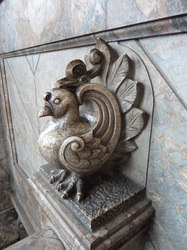
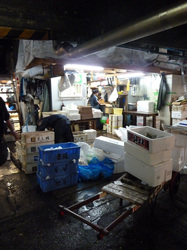
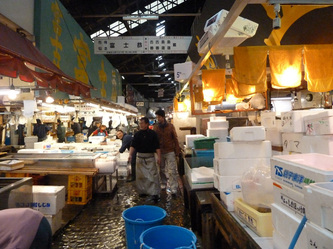
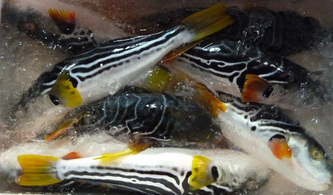
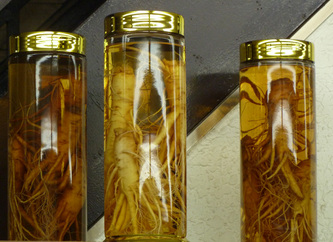
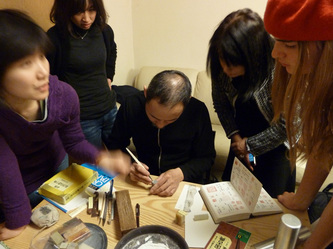
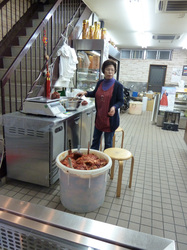
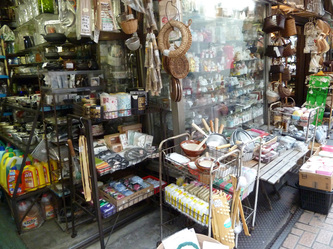
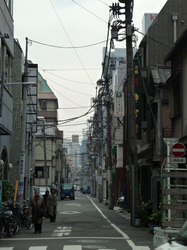
 RSS Feed
RSS Feed
